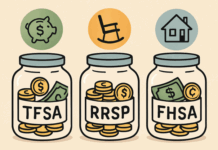
Running a home business brings complete independence. You get full control over all aspects, including work schedules and pace, clients, and the direction of your business. But despite all the benefits, a home-based business also brings numerous financial ups and downs. One month, your cash flow might be smooth and predictable. Next month, a client pays late or a surprise bill pops up. It could derail even the most carefully planned budget.
No doubt, even a perfect plan may have its flaws, and home business owners encounter these ups and downs. The point isn’t to avoid financial ups and downs—you need to learn how to handle them with some planning, versatility, and practical tools.
In this article, we’ll look at practical ways to stay financially steady—from building a solid financial base to using financing options that can fill short-term cash gaps when needed.
Why Managing Money Is So Tricky for Home Businesses
Owning a home business often means wearing multiple hats. You are an entrepreneur, accountant, marketer, and customer care agent. With so many things to take care of, it’s pretty challenging to get a full picture of your finances.
Some of the most typical financial ups and downs home business owners face include:
Irregular Income:
Home businesses operate differently from paid employment because they need clients to pay for their services, which might not follow a regular payment schedule.
Unexpected Costs:
The equipment in your business can fail at any time, while software subscription costs rise, and tax authorities send unexpected bills.
Mixing Personal and Business Finances:
Without clear boundaries between personal and business funds, financial visibility quickly disappears.
Improving financial management starts with identifying problems. Understanding income and spending patterns makes it easier to make smart choices during low-cash periods.
How to Create a Strong Financial Foundation
A strong financial base gives your business a safety net, helping you go through hectic months safely and securely.
Budgeting and Expense Tracking
Maintaining a budget requires more than recording your spending activities. The main goal should be to identify spending patterns that will help you make smart business choices. Your first step requires you to track all business income sources and create separate sections for your expenses. The process becomes simpler if you use tools like spreadsheets or budgeting apps. It will give you a better understanding of your finances.
Regularly review your finances to spot where you can cut costs and determine which months might require additional budget management. Financial clarity helps you manage growth because it eliminates financial ups and downs that distract you from business development.
Emergency Funds for Home Businesses
Just like every person can benefit from a personal backup fund, your home business needs one too. It is better to save enough to cover at least three months of operating expenses. This cushion lets you handle surprise bills without scrambling for quick solutions.
Separating Personal and Business Finances
Mixing personal and business money is a common trap for home business owners. Keep separate accounts, or it will make your budgeting and tax planning more complicated than it already is. Be sure to open a special business account and use this only for your small business.
Protect Your Business by Diversifying Income
Most people who’ve run a business or invested money in the financial markets learn this rule early—you should never put all your hopes in one place. If a home business is heavily dependent on just one client, one big project, or a single type of product, a small setback can hit really hard. To lower that risk, you could do the following:
- Don’t limit your business to just one offer. When demand drops in one area, the rest of your services or products can still generate income.
- Look into income that doesn’t depend on your daily effort. It can be something like digital downloads, affiliate links, or subscription-based offers. These can bring in extra money in the background.
When your income comes from several places instead of just one, a setback in one area won’t stop the whole business from running.
Keep Cash Flow Steady with Smart Payment Strategies
Getting paid late is a common headache for home business owners, but there are ways to handle it.
Set Clear Payment Terms
State your payment terms before any work begins. Add the deadline, late charge, and early-payment bonus to your paperwork. This creates accountability and helps prevent delays.
Use Invoice Automation Tools
If you’ve ever tried to monitor payments manually, you know how draining it is. Modern invoicing tools take over the boring part—they remind clients, log unpaid invoices, and let people pay online. That keeps the money moving without constant supervision.
Negotiate Flexibility
Sometimes, clients may encounter their own problems, either financial or personal. You can both retain a client and maintain a cash flow by offering payment plans or partial payments. Essentially, it’s about balancing flexibility with a reliable plan to collect payments.
How to Bridge Short-Term Cash Gaps Without Derailing Your Business
Running short on cash doesn’t always mean your business is mismanaged—it often happens when money comes in at a different time than it goes out. Your job as a manager and owner is to always have a plan to carry out operations at any time.
Adjust Cash Flow Timing
Bridging a short cash dip doesn’t always require extra funding. Often, you don’t need anything complex—a small timing tweak can do the job. You might request part of a payment before the final invoice is due, or ask a supplier to split a big bill into smaller pieces. Moves like that can ease cash flow without throwing your work off balance.
Get Temporary Income Boosts
When timing tweaks don’t fix the gap, a short burst of extra income can help. You could grab a quick project, sell a fast-turnaround service, or offer a few paid consulting hours. That way, you bring in money right away without touching savings or interrupting the work already in progress.
Consider Short-Term Loans and Microbusiness Financing
Occasionally, short-term financing may be the easiest way to cover unexpected costs and keep your business running. Short-term loans aren’t meant for long-term growth. They act as a temporary bridge to help small businesses keep cash flowing until payments arrive.
The important thing is to use financing options for microbusiness owners wisely: borrow only what you can reasonably repay and treat them as last-resort solutions, not something you should always use. In such a way, ensure your business can stabilize without hidden risks.
How to Plan for Long-Term Stability
Short-term solutions give relief, but planning for the long term is what keeps your home business steady, even when income and expenses fluctuate. To turn that planning into action, try these practical steps to keep your finances strong:
- Take a regular look at your finances, whether it’s monthly or quarterly. This shows you where things are going well, where to adjust pricing, and which areas need improvement.
- Check your cash flow to determine the best pricing strategy for your services, bundles, and seasonal promotions.
- Learn more about financial management so you have the skills to detect problems earlier and take prompt action.
Early intervention enables you to manage slow business periods while maintaining progress.
Protect Your Home Business from Financial Surprises
Running a home business means expecting your income to go up and down. Sparing a bit of time to think carefully, spreading income sources, and using the right tools, you can keep minor setbacks from throwing operations off track. Make a point of building a strong financial foundation and watch your cash flow regularly. Doing this will keep your business resilient, especially when unexpected costs pop up.
Rest assured, no one starts out as a businessman, and financial stability is a skill you can learn. So, plan ahead, use practical strategies, and you’ll be able to keep your work moving even in slow months, focus on growth, and keep a lot more peace of mind while running your home business.
Find a Home-Based Business to Start-Up >>> Hundreds of Business Listings.













































